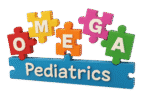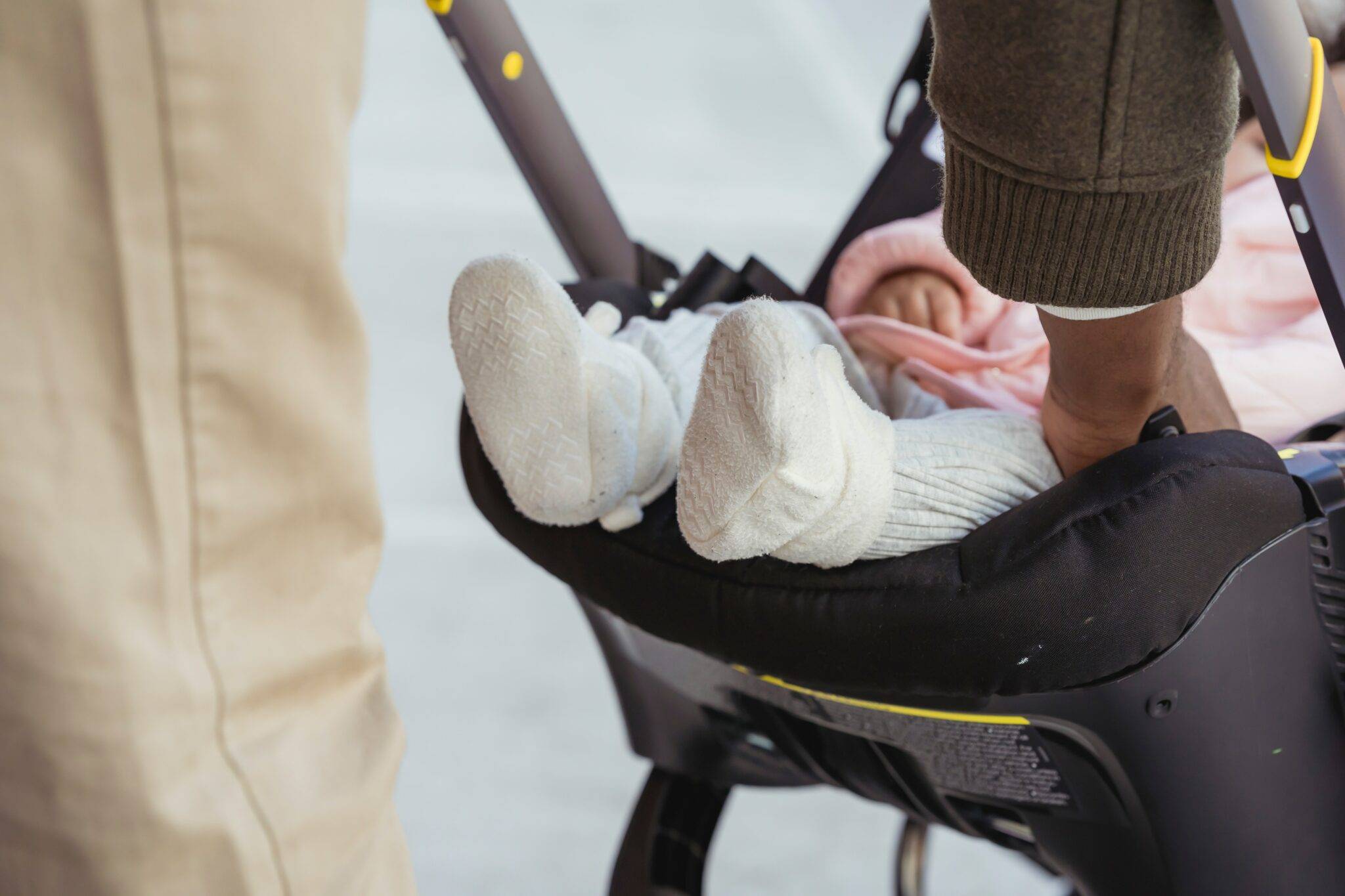One of the most exciting moments of becoming a parent is watching your baby grow and reach important milestones. These small but meaningful steps help you know your little one is developing as expected. Among the earliest milestones is when newborn baby can hold head up. The milestone is a sign that your newborn’s muscles are getting stronger and that they’re on their way to bigger, more exciting milestones, like sitting, rolling over, and crawling.
This post will dive deep into everything parents need to know about head control—when it happens, how to help their baby strengthen their muscles and other key milestones that occur around the same time. We’ll also guide you on when to seek advice if your baby isn’t showing signs of development at the expected pace. Let’s begin with the basics: when do babies start to hold their heads up?
Newborn Baby Can Hold Head Up: Head Control Milestone
The Early Days: Why Newborns Can’t Hold Their Heads Up
In the first few weeks after birth, it’s normal for babies to have almost no control over their head and neck muscles. Their heads are relatively large compared to the rest of their bodies, and their neck muscles are weak. You’ll notice that your newborn’s head needs full support whenever you pick them up or hold them.
If you let go, the head might flop forward or backward because they don’t have the strength to hold it steady. This lack of head control is nothing to be concerned about. It’s expected in newborn development. At this stage, your baby is busy learning to adapt to the outside world, which is quite different from the womb. You might notice that when they lie on their tummy or your chest, they will attempt to lift their head slightly, but this movement will be brief and unsteady.
1 to 2 Months: First Signs of Head Lifting
Between 1 and 2 months, you’ll see the first hints of head control. During tummy time, your baby may attempt to lift their head off the ground or your chest. These attempts won’t last long—maybe just a second or two—but this is the beginning of an important strength-building process.
Over the next few weeks, these head lifts become more frequent and controlled. At this age, tummy time is important. This is when you place your baby on their stomach while they’re awake and supervised. It helps build the muscles in their neck, shoulders, and back, which are necessary for better head control. Babies at this stage can usually hold their heads up for a few seconds before they get tired and need a break. Keep tummy time short but frequent, and gradually increase the duration as your baby grows stronger.
3 to 4 Months: Stronger and Steadier Head Control
By the time your baby reaches 3-4 months, head control will noticeably improve. Most babies at this stage can lift their heads 45 degrees or more when lying on their tummies, and some can push up on their forearms to get a better view of their surroundings.
You might notice your baby scanning the room more easily, moving their head from side to side as they take in new sights and sounds. During this period, babies also begin to hold their heads up more steadily when you’re holding them in a seated position.
Although their head may still wobble, you’ll see significant progress compared to the early weeks. They might start lifting their heads to look around or follow your voice, a sign that their neck muscles are becoming stronger. At this point, make tummy time part of your daily routine. Aim for a few sessions daily, each lasting a few minutes, depending on your baby’s comfort. You can gradually extend these sessions as your baby becomes more accustomed to tummy time and enjoys it.
5 to 6 Months: Full Head Control
Most babies achieve full head control by 5–6 months of age. This means they can hold their head steady and upright without support, whether lying on their stomach, sitting in your lap, or being carried. Babies with strong head control can turn their heads smoothly to follow objects or look around the room, a sign that they’re developing the muscle strength they’ll need for future milestones like rolling over and sitting up. Your baby’s head movements will be much more deliberate and coordinated.
When placed on their tummy, they can push up with their arms and lift their chest off the ground, making tummy time an even more enjoyable activity for them. Some babies may also show early signs of sitting up with minimal support, as their core muscles are developing with their neck strength.
Achieving full head control is a major milestone that signals your baby is on track for further physical development. Now that their neck muscles are stronger, they’ll soon be ready to tackle sitting up, rolling over, and crawling—some of the most exciting stages of infant growth.
Why Head Control Matters for Your Baby’s Development
Strong head control is more than an important physical milestone. It’s a key indicator of your baby’s overall motor development and plays a significant role in their growth. Here’s why mastering head control is such a big deal for your baby:
- Foundation for Motor Skills: Head control is the building block for other gross motor skills, like rolling over, sitting, and crawling. Without strong neck and shoulder muscles, it would be much harder for babies to lift their heads, which is a critical part of rolling from their back to their stomach. Good head control also helps babies learn to sit up independently, and eventually, stand and walk.
- Early Social and Cognitive Development: Babies gain better control over their heads; they can interact more with their surroundings. They can look at toys, track movements with their eyes, and engage with people around them. This increased interaction helps with both cognitive and social development. Babies who can hold their heads up are also more likely to make eye contact, smile at familiar faces, and respond to sounds.
- Improved Feeding and Digestion: Babies with better head control can feed more efficiently, whether breastfeeding or bottle-feeding. Good head control helps babies latch more securely and comfortably, reducing the risk of feeding issues. Strong head and neck muscles also assist with swallowing, making the transition to solid foods smoother when the time comes.
How to Help Your Baby Develop Head Control
As a parent, you can support your baby in developing head control and reaching other physical milestones. Let’s explore some simple yet effective strategies.
1. Regular Tummy Time
Tummy time is essential for developing head control. Start tummy time as early as possible after bringing your newborn home from the hospital, and aim for short but frequent sessions throughout the day. In the early days, you might only manage a few minutes at a time, but as your baby grows, you can gradually extend tummy time to 10-15 minutes or more per session.
To make tummy time more enjoyable, try using a soft blanket or play mat, and get down on the floor with your baby to encourage interaction. You can also use toys, mirrors, or even your voice to capture your baby’s attention and motivate them to lift their head.
2. Carrying Positions
Holding your baby in different positions throughout the day can help build their neck muscles. Try carrying your baby upright with their head resting against your chest. This position encourages them to lift their head to look around. You can also try the football hold, where you hold your baby face down along your forearm, supporting their chest with one hand while allowing them to practice head control.
Always support your baby’s head during the first few months of life, especially when picking them up or putting them down. As they grow stronger, you can begin offering less support to allow them to use their neck muscles more.
3. Engaging Playtime
Interactive play is another great way to help your baby strengthen their head and neck muscles. During tummy time, place toys or interesting objects just out of your baby’s reach to encourage them to lift their head and push up with their arms.
You can also lie on your back with your baby on your chest, allowing them to practice lifting their head to look at you. As your baby gains better control, offer more upright play opportunities, such as using a bouncer or supported sitting in your lap. These activities use their neck muscles while also keeping them entertained.
When Should You Worry About Head Control?
Every baby develops at their own pace; some may take longer to reach milestones than others. However, some signs may indicate a delay in head control—keep an eye on your baby’s progress. If your baby is not showing signs of head control by 4 months or has poor muscle tone, appearing floppy or limp when held, it may be worth consulting your pediatrician. Other concerning signs include:
- Head flops forward or backward even when sitting with support.
- No attempts to lift the head during tummy time by 3 months.
- Limited movement in the arms and legs during tummy time.
Delayed head control may be linked to low muscle tone (hypotonia) or developmental delays. Early intervention is key, so if you’re ever concerned about your baby’s development, don’t hesitate to seek professional advice. For more information on when to contact your pediatrician regarding developmental concerns, visit Omegapediatrics.
Other Milestones Alongside Head Control
As your baby works on gaining better head control, they’ll also be reaching other developmental milestones. Here are a few other key moments to look out for during this exciting stage of growth:
- Social Smiles: Around the same time that babies begin improving their head control, they often start smiling in response to familiar faces and voices. Known as social smile, this occurs around 6–8 weeks of age. These early smiles are signs your baby is beginning to engage with the world around them and are an important milestone in social development.
- Rolling Over: At 4-6 months old, most babies roll over from their tummy to their back, eventually from back to tummy. Rolling over is closely tied to head control since it requires your baby to use their neck and core muscles to twist their body. This milestone is often one of the first signs that your baby is becoming more mobile.
- Sitting Up: Sitting up is another major milestone after full head control. By 6–8 months, many babies can sit up independently or with minimal support. Sitting requires strong head, neck, and back muscles linked to developing head control.
Enjoy the Journey of Growth and Discovery
The milestone of when a newborn can hold their head up is a key indicator of your baby’s overall development. It’s the foundation for many other exciting physical skills that will emerge over the next few months, from sitting up to crawling and beyond. Provide your baby with plenty of opportunities to strengthen their neck muscles. It is important to remember that every baby develops at their own pace.
By supporting your baby through tummy time, interactive play, and lots of love, you help them reach their head control milestone and set the stage for future achievements. If you have concerns about your baby’s progress, consult your pediatrician. They provide reassurance or identify areas where early intervention may be helpful. As you watch your baby grow and reach each new milestone, remember that these moments are as much about discovery as they are about development. Enjoy every step of the journey!
For further information on your baby’s growth and development or to consult with a pediatrician, visit Omegapediatrics.





